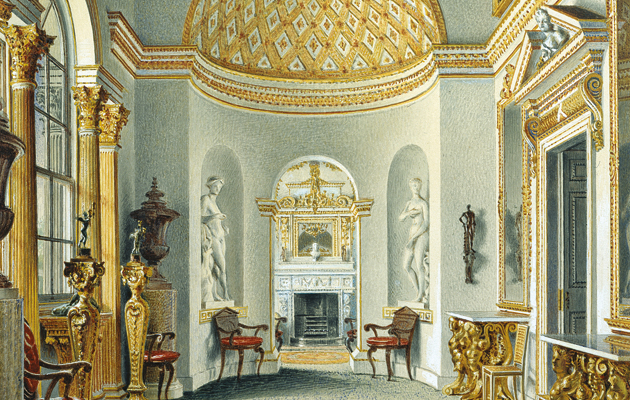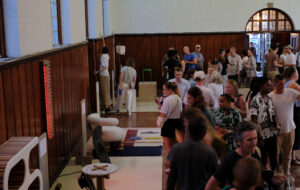|
|
||
|
Less an architect, more a stage manager of buildings and gardens, Kent’s mastery of artifice defined an age William Kent (1685-1748) was one of the most prolific and successful architects of the Georgian era; he was also a plagiarist, a historical revivalist and a shameless self-publicist in a period now regarded largely for its taste and urban good manners. Along with his patron Lord Burlington, Kent was responsible for the 18th-century revival of Palladianism. He published a book of Andrea Palladio’s designs, augmented by a few of his own, and, alongside Burlington, designed Chiswick House, an exquisite pastiche of Palladio’s Villa Rotunda. Kent came to architecture via a circuitous route. He began his career as a sign painter before travelling to Italy where he spent ten years escorting young British aristocrats on their grand tours of the ruins of classical antiquity. Not only did this provide Kent with an architectural education, it also supplied him with much of his future client base. On his return to England, Kent began a phenomenally successful career designing, firstly, interiors, then buildings and landscapes. He became an establishment insider, the architect of Horse Guards and the Treasury and a schmoozer par excellence who designed the interiors of prime minister Robert Walpole’s Houghton Hall, and was appointed “Architect to the Prince of Wales”. Kent’s interiors were richly decorative, employing sumptuous materials and exaggerated classical motifs. He was satirised by William Hogarth both for his eclecticism and his dubious taste. He was quite happy to slip into a bit of gothicism if required, such as his designs for Esher Place in Surrey. Kent also invented the “exploded plan”, a style of drawing that laid out the elevations of a room around the plan, like a cut-and-fold diagram. As the late architecture critic Robin Evans has pointed out, such a mode of projection privileged surface over spatial qualities, focusing on the materials and decorative effects applied to the walls of a building rather than what happens between them. His painterly sensibility was also instrumental in his other great contribution to British culture: the picturesque landscape. Kent was a pioneer of a style of landscape design that composed country house gardens as a series of stylised vistas. The picturesque – like Palladianism – emerged from a veneration of southern European classicism, but it was an undoubtedly British invention – a reflection of the country’s wealth and global power. It was Kent’s good fortune that his career coincided with a huge growth in the building of country estates. His skills as a painter and a manipulator of surfaces allowed him to recreate in miniature the landscapes visited by young British aristocrats on their European tours and admired in the paintings of Claude Lorrain and Nicolas Poussin. Kent’s most famous gardens at Stowe and Rousham are extraordinary feats of artifice, sculpted landscapes populated by grottos, follies, waterfalls, serpentine lakes and stage-managed clumps of trees. Equally stage-managed were the drawings that preceded them. Landscape with Donkey Pulling A Cart of 1738, for instance, depicts one of these Arcadian landscapes complete with ruddy-faced peasants engaged in honest toil. Quite possibly these same peasants had their homes demolished as a consequence of the landowner’s pursuit of a nice view. Both Palladianism and the picturesque still have an enormous hold on British architecture and culture. William Kent’s role in promoting both reflects his prodigious talent – as well as his showmanship and a taste for elaborate fakery. He was a copyist at a time when such a thing wasn’t a pejorative expression, but simply how architecture evolved. He was ultimately a brilliant scenographer, who could manipulate elements – landscape, furniture or buildings – into a convincing and seductive “scene”. Despite its reputation, the Georgian period was characterised by a visual sensibility that reconfigured both city and countryside into an elegant sequence of views, masking a rapacious mercantile culture. Kent was its preeminent exponent. |
Words Charles Holland
William Kent: Designing Georgian Britain |
|
|
||

















